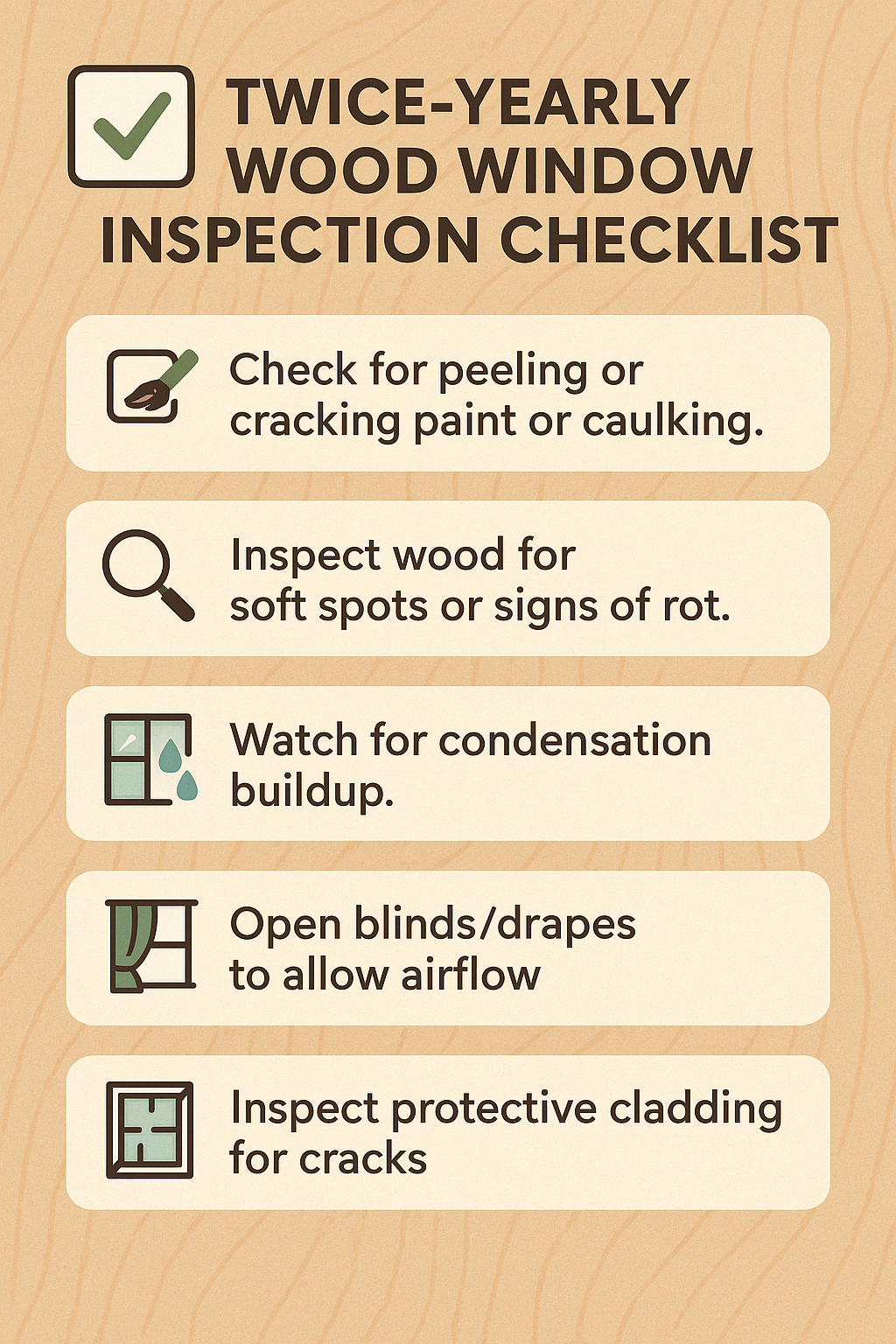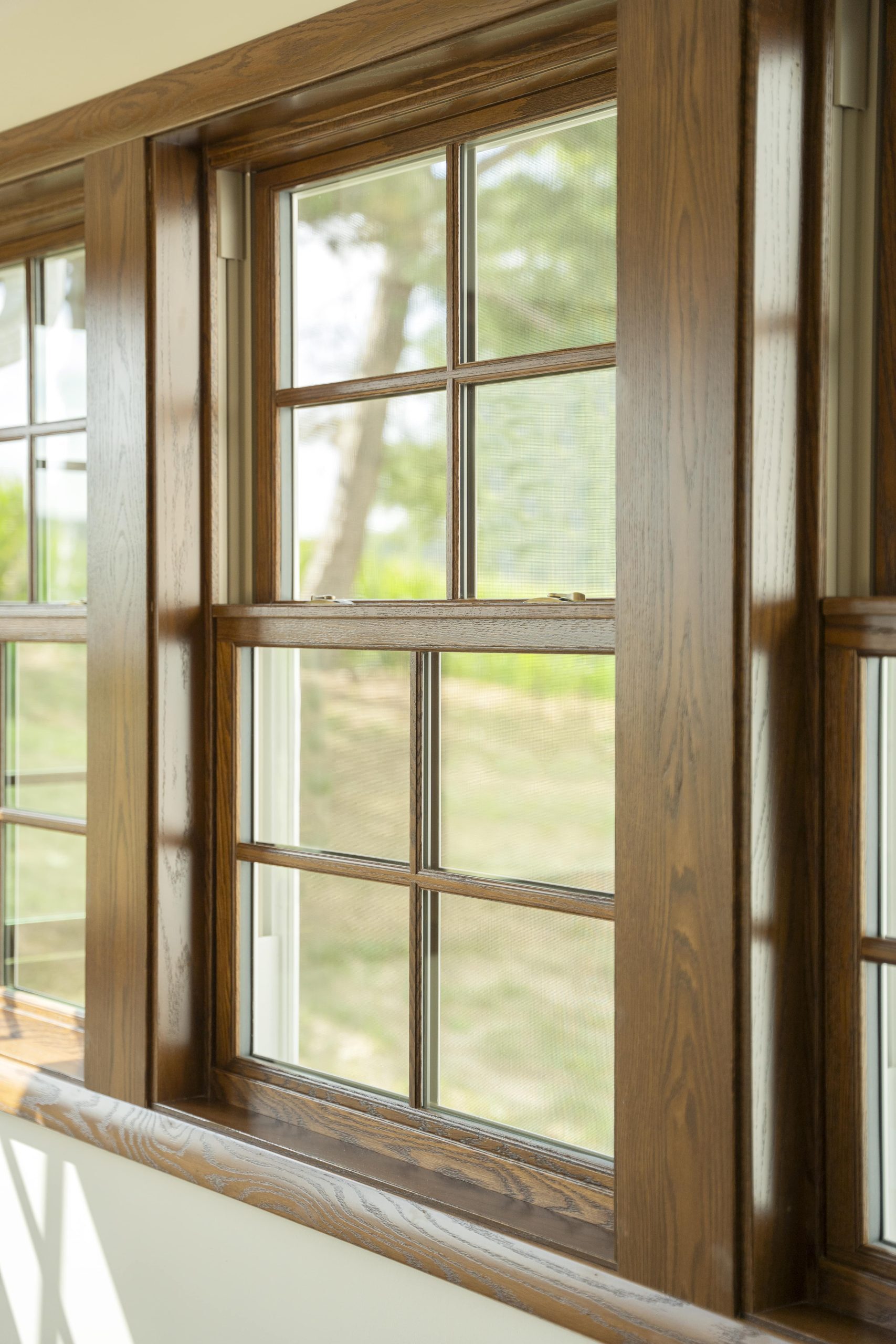How to Maintain and Take Care of Your Wood Windows
July 28th, 2025
7 min read

Are your wood windows starting to show troubling signs like rot, discoloration, or cold drafts in the cold months?
Are you worried these small problems could escalate into expensive repairs or even replacements down the line?
Wood windows can last for decades, but without the right seasonal care, Pittsburgh’s harsh winters and humid summers can quickly turn minor issues into major headaches.
At Energy Swing, we’ve repaired and replaced hundreds of wood windows across Western PA, giving us firsthand insight into how Pittsburgh’s climate affects window longevity and performance.
In this article, you’ll learn exactly how to maintain and protect your wood windows, recognize early warning signs of damage, and confidently decide when it’s time to call a professional or consider replacements.
Why Do Wood Windows Need More Maintenance Than Vinyl or Aluminum?
Wood windows offer a warmth and charm that’s hard to replicate with vinyl or aluminum. They can be stained or painted to match your interior, giving you more design flexibility.
However, wood is a natural material. It expands, contracts, and can absorb moisture if not properly sealed, which is why wood windows demand more care than their factory-finished counterparts.
Still weighing whether wood windows are right for your home in the first place? Check out our guide to the pros and cons of wood windows to get the full picture.
How Often Should You Inspect Wood Windows in Pittsburgh?
Even the highest-quality wood windows need a watchful eye, especially here in Pittsburgh, where winters can be icy and summers are humid.
A twice-yearly inspection is one of the easiest ways to keep them in good shape and prevent small issues from turning into big repairs.
Ideally, you’ll want to check them in the spring (after winter’s wear and tear) and in the fall (before winter returns). That timing lets you catch problems when the weather is milder, too.
Fun fact: Studies from the U.S Department of Energy show that up to 30% of a home’s heat loss can happen through poorly maintained windows. Regular inspections help avoid that costly waste.

What are Some Common Signs Your Wood Windows Are Rotting or Damaged?
Wood windows are great at telling you when they need attention (if you know what to look for). Catching these warning signs early can help you avoid rot, warping, or even expensive window replacements later on.
Look out for these red flags during your twice-yearly inspections:
| What You Notice | What It Might Mean |
|---|---|
| Dark or discolored wood near the glass | Water damage or early rot |
| Rag snags while cleaning | Clear coat is breaking down; wood is exposed |
| Window sticks or is hard to open in summer | Moisture-related swelling or seal failure |
| Musty smell around frame | Hidden mold or mildew inside wood or wall cavity |
| Black streaks on oak wood | Water staining and tannin bleed (often a precursor to rot) |
These issues are most common in areas with repeated moisture exposure, like the bottom corners of window frames.
How Do You Clean Wood Windows Without Damaging Them?
Keeping your wood windows clean doesn’t have to be complicated, but you do need to be gentle. Harsh chemicals or heavy scrubbing can damage the protective finishes that keep your wood safe from the elements.
Generally, a light touch goes a long way. Focus on regular dusting and mild cleaning to keep dirt and pollen from building up, which can contribute to surface breakdown.
Recommended approach:
- Use a gentle duster or soft cloth
- Wipe with wood-friendly products like Pledge
- Keep it dry
What to Avoid:
- Petroleum-based cleaners (these can break down the protective finish)
- Harsh chemicals
- Spraying silicone or WD-40 directly on wood surfaces
If you do lubricate window hardware with silicone sprays, remember to wipe away any overspray so it doesn’t damage the wood finish.
How Should You Protect the Wood Frame From Moisture and Rot?
Moisture is wood’s worst enemy, and here in Pittsburgh, between heavy rain and freeze-thaw cycles, your windows see plenty of it. Preventing water from creeping in is the single most important part of caring for your wood windows.
A well-sealed window will resist swelling, mold, and rot for years to come. If you skip this step, you could be looking at costly repairs down the line.
Here’s what you should do:
- Seal all sides of the frame with paint or stain
- Maintain proper caulking around the window
- Inspect for gaps in trim or exterior cladding
- Consider flexible exterior polyurethane finishes if you have exposed wood
Remember: Pittsburgh’s freeze-thaw cycles can wreak havoc on unprotected wood, so resealing every few years is crucial.
Thinking about replacing your wood windows due to moisture or damage? Schedule a free consultation and we can help you decide if a full replacement makes sense for your home.

Paint vs. Stain: Which Is Better for Protecting Your Wood Windows?
Choosing between paint or stain is more than a style decision, it’s also about protection. The right coating shields your wood from UV rays, Pittsburgh’s seasonal humidity, and everyday wear.
Paint provides a solid, uniform color with a thick protective barrier, while stain soaks into the wood to showcase its grain. Think about your maintenance habits, too. Painted finishes may need more frequent touch-ups on sun-exposed sides, while stains can fade and require resealing.
Not sure which finish is right for your wood windows? Here’s a side-by-side look at what to expect from both paint and stain:
| Paint | Stain | |
|---|---|---|
| Pros | • Strong protection against UV and moisture • Smooth, solid-color finish • Hides imperfections • Easy to match trim or décor |
• Enhances natural wood grain • Penetrates wood for a natural look • Won’t peel or chip • Ideal for rustic or traditional styles |
| Cons | • Can peel or crack in sun exposure • Covers wood grain • Requires full repainting for color changes • Needs surface prep |
• Less UV protection than paint • Color can fade in full sun • Harder to change color later • Needs regular resealing |
Pro tip: Oil-based finishes tend to be more durable, but water-based options are more eco-friendly and family-friendly (especially for kids and pets).
Check local Volatile Organic Compound (VOC) restrictions in Pennsylvania before choosing a product. Pittsburgh homeowners have different rules than those in neighboring states
How to Protect Wood Windows from Termites, Ants, and Other Pests
Unfortunately, critters love wood almost as much as we do! Termites, carpenter ants, and even squirrels can damage your wood windows if you aren’t proactive.
Think of pest prevention as part of your yearly window care. Keep areas around your windows sealed, caulked, and dry, and you’ll take away most of what these pests are looking for.
Keep pests away by:
- Keeping all gaps that could let insects in caulked and sealed
- Ensuring the area around your window stays dry
- Trimming back trees and bushes
- Inspecting for signs of chewing or burrowing near corners or trim
Pittsburgh fact: In older neighborhoods like Shadyside or Squirrel Hill, residents have even reported woodpeckers damaging window frames looking for insects hiding inside!
How Can You Fix Wood Window Rot Before It’s Too Late?
Spotting rot early can mean the difference between a simple fix and a total window replacement. If you notice soft or crumbling wood, act fast.
- Test for rot: Press gently on suspicious spots. If the wood feels soft or crumbly, it’s rotting.
Fix options:
- Small spots: wood fillers or bonding products
- Larger areas: partial sash replacement
- Extensive rot: a full window replacement may be best
Rot spreads fast, so don’t delay repairs. If you aren’t sure, have a professional evaluate it.

What Are Seasonal Tips for Maintaining Wood Windows in Pittsburgh?
Your wood windows face different challenges depending on the season. Staying one step ahead of Pittsburgh’s unpredictable weather is key.
Winter
- Open blinds and shades to help air circulate and avoid condensation
- Watch for moisture buildup on sills
Summer
- Regularly clean off pollen, dirt, and debris to protect finish
- Check for swelling or sticky operation from humidity
Pro tip: Cellular blinds can help insulate, but make sure you occasionally open them to allow airflow, preventing mold growth.
DIY or Call a Pro: When to Get Help with Wood Window Issues
Some wood window issues are quick weekend fixes; others can snowball into bigger (and costlier) problems if ignored.
Not sure which is which? Here’s a quick guide to help you decide when it’s safe to DIY and when it’s time to call in a pro:
| Issue | DIY-Friendly? | Call a Pro If… |
|---|---|---|
| Peeling paint or finish | ...you’re seeing deeper damage underneath | |
| Recaulking trim | ...the leak is behind siding or flashing | |
| Stuck or swollen sash | ...there’s visible warping or broken hardware | |
| Small patches of surface rot | ...the rot is spreading or structural | |
| Cloudy glass/condensation inside pane | ...this likely means seal failure (requires replacement) |
Pittsburgh’s seasonal swings can make window problems worse in a hurry. So if it’s a serious problem, don’t wait to bring in a professional.
Ready to explore replacement costs? Use our quick pricing calculator to get a ballpark estimate based on your home.

What Are the Benefits of Proper Wood Window Maintenance?
A little effort goes a long way. Well-cared-for wood windows not only last longer, but they also help keep your energy bills in check and maintain the beauty of your home.
You’ll enjoy:
- Longer window lifespan
- Better energy efficiency
- Lower heating and cooling costs
- Preserved character for historic Pittsburgh homes
- Higher home resale value
In a city where craftsmanship still matters, maintaining those wood windows is worth every bit of care.

Keeping Your Wood Windows Looking Great for Years to Come
Wood windows can beautifully enhance your home for decades, as long as they're properly maintained.
But without regular care, Pittsburgh’s tough climate can quickly lead to rot, pests, and costly replacements.
If your windows show signs of damage or you’re concerned they may be beyond repair, your next step is simple: use our instant pricing calculator to determine whether professional replacement makes sense for your home.
At Energy Swing, we've helped hundreds of Pittsburgh homeowners replace their wood windows and keep their homes looking great. We’re ready to help you, too.
FAQ: Wood Window Maintenance for Pittsburgh Homes
-
How often should I inspect my wood windows in Pittsburgh?
Inspect your wood windows twice a year. Once in the spring and once in the fall. Pittsburgh’s freeze-thaw cycles and summer humidity can speed up wear, so catching issues early helps prevent costly damage.
-
What’s the best way to clean wood windows without ruining the finish?
Use a soft cloth or gentle duster along with wood-friendly cleaners like Pledge. Avoid harsh chemicals, petroleum-based products, or direct sprays like WD-40, which can strip protective coatings.
-
Can I fix wood rot myself, or do I need a professional?
Small areas of rot can often be repaired with wood filler or bonding products. But if the rot is spreading, deep, or affecting window function, it’s best to call a professional for an evaluation or replacement.
-
Should I paint or stain my wood windows?
Paint offers strong UV and moisture protection and hides imperfections, while stain enhances the wood grain and is ideal for traditional styles. Pittsburgh homeowners should also consider maintenance habits and sun exposure before choosing.
-
Are there specific risks for wood windows in older Pittsburgh neighborhoods?
Yes, areas like Shadyside and Squirrel Hill often have mature trees and older homes, which can increase the risk of woodpecker damage, insect activity, and hidden moisture issues. Regular inspections and sealing are especially important.
